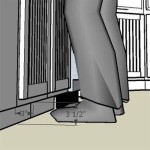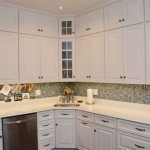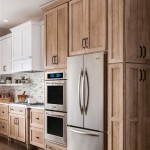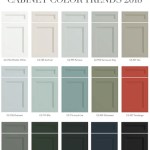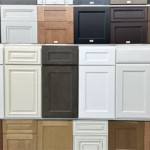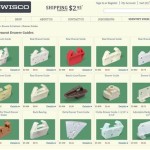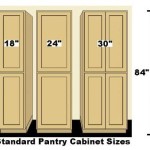Kitchen Cabinet Quality Levels: A Guide to Choosing the Right Fit
Kitchen cabinets are a significant investment, serving as both functional storage and a key design element in the heart of your home. Navigating the world of cabinet options can be overwhelming, with a wide spectrum of materials, construction methods, and price points available. Understanding the various quality levels in kitchen cabinets is crucial for making an informed decision that aligns with your budget and lifestyle.
Cabinet Construction: The Foundation of Quality
The construction of kitchen cabinets directly impacts their durability, longevity, and overall quality. Several factors contribute to the sturdiness and longevity of cabinets:
- Cabinet Box Construction: The cabinet box, the structural core, can be made from various materials. Plywood is considered the gold standard due to its stability and resistance to warping. Particleboard, though less expensive, is less durable and susceptible to moisture damage. Solid wood boxes offer a classic look but can be more expensive.
- Door and Drawer Construction: Cabinet doors and drawers are critical components. Solid wood doors, often found in higher-end cabinets, offer superior durability and elegance. However, engineered wood doors, such as MDF (Medium-density Fiberboard), provide affordability and versatility. Drawer construction also varies; dovetail joinery is a hallmark of high-quality drawers, known for its strength and longevity.
- Hardware and Finishes: Quality hinges, drawer glides, and knobs/pulls contribute significantly to ease of use and longevity. Look for durable materials like stainless steel or brass. The finish on the cabinet doors and drawer fronts can be painted, stained, or lacquered. Higher-quality finishes are more resistant to scratches and fading.
Material Options: Durability and Aesthetics
Kitchen cabinets come in a variety of materials, each with its own benefits and drawbacks. Understanding the properties of these materials will help you choose the best option for your needs:
- Wood: Solid wood cabinets are a timeless choice, offering natural beauty and durability. Common wood species include cherry, maple, oak, and walnut. They require regular maintenance to preserve their finish.
- Plywood: Plywood is a strong and stable material, making it a popular choice for cabinet boxes. It is less susceptible to warping or cracking than solid wood and offers a cost-effective option.
- MDF (Medium-Density Fiberboard): MDF is a manufactured wood product made from wood fibers. It is dense, smooth, and readily available, making it a budget-friendly option. However, it is less durable than solid wood or plywood and susceptible to moisture damage.
- Laminate: Laminate is a durable, scratch-resistant material often applied to cabinet doors and drawer fronts. It comes in a wide variety of colors and patterns, offering a versatile and affordable option.
- Thermofoil: Thermofoil is a plastic laminate applied to a substrate, often MDF. It is a durable, moisture-resistant option with a smooth, glossy finish. Thermofoil cabinetry is generally more affordable than solid wood or plywood.
Quality Levels and Price Points
Kitchen cabinet quality levels are often categorized into three main tiers:
Entry-Level:
- Construction: Typically use particleboard or MDF for cabinet boxes, and less durable door and drawer construction.
- Materials: Commonly feature laminate or thermofoil finishes.
- Hardware: May utilize lower-quality hinges and glides.
- Price: Most budget-friendly option, often offered in stock styles.
Mid-Range:
- Construction: Generally use plywood for cabinet boxes and better-quality door and drawer construction.
- Materials: May offer laminate, thermofoil, or wood veneer finishes.
- Hardware: Features improved hinges and glides for smoother functionality.
- Price: A balanced option, offering a good combination of quality and affordability.
High-End:
- Construction: Primarily utilize solid wood for cabinet boxes, doors, and drawers, often with dovetail joinery for drawers.
- Materials: Feature high-quality wood species, custom finishes, and intricate detailing.
- Hardware: Employs premium hinges, glides, and decorative hardware.
- Price: The most expensive option, offering exceptional craftsmanship and luxurious aesthetics.
Remember, the best quality level for your kitchen cabinets depends on your individual needs, budget, and desired aesthetics. It's essential to weigh the factors of construction, materials, and price points to choose the option that offers the optimal balance of functionality, longevity, and visual appeal for your investment.

Top 10 Characteristics Of High Quality Kitchen Cabinets Premier Kitchens And

Top 10 Characteristics Of High Quality Kitchen Cabinets Premier Kitchens And

9 Best Kitchen Cabinets Of 2024

How To Find The Best Kitchen Cabinets 2024 Guide Forbes Home

The Best Kitchen Cabinet Types For Your Style And Budget

The Best Kitchen Cabinet Types For Your Style And Budget

High End Kitchen Cabinets Top 5 Brands For Your

8 Diffe Types Of Kitchen Cabinets You Ll Love

Kitchen Cabinets 6 Things To Know First Bob Vila

Discount Kitchen Cabinets Rta Cabinetselect Com
Related Posts

